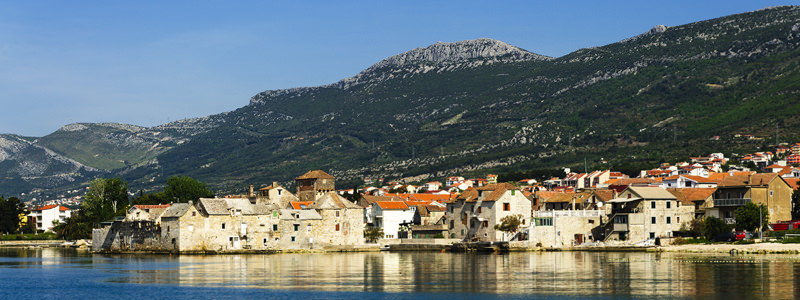
When we hear the term Cult Wine in California we often relate it to cult cabs. Big, full bodied small production Cabernet Sauvignon based wines with high alcohol and a good amount of oak, that almost masks the inherent pepper-like characteristic of the variety. But in the 1990’s another cult wine rose to the top: Zinfandel.
Once called America’s Claret (a word coined by the British to describe wines from Bordeaux or Bordeaux-like wines) this grape at one time gave Cabernet Sauvignon and Merlot a run for its money as the most densely planted grape variety in the Golden State. It is common knowledge that Merlot and Cabernet Sauvignon are from the famous Bordeaux region of France. But where is the ultimate BBQ red from? It took some time, but through science and determination we now know the origins of America’s great Claret.
Before Zinfandel made a name for itself in California, it was on the East Coast of the United States where it first cut its teeth – Long Island to be exact. In the early 19th century, botanist George Gibbs received an import from the Austrian Imperial Nursery consisting of many vine cuttings, one of which was labelled Zinfandel or Zinfandle – the actual spelling is not known but the thought is that it was mislabelled across the pond as the Austrian white wine grape Zierfandler.
Being a botanist and not a winemaker Gibbs took some of his produce, Zinfandel included, to Boston and the grape had a moment in the sun as one of the most popular table grapes on the market. But Zinfandel was not meant for snacking during a picnic, it was meant for so much more. Around 1849, a colleague of Mr. Gibbs informed him that there was gold to be had in California and that everyone was going out to make their fortunes mining for riches. Gibbs drank the Kool-Aid and set off for the west coast, Zinfandel in tow. As the California Gold Rush swelled and peaked, the state’s population exploded and the competition for gold heated up. But it turned out that only a select few struck it rich, leaving others stranded, their pans dry.
Many of these transplants turned to agriculture, with viticulture as a key component, resulting in the little Boston favorite becoming the center of attention. If you were a miner in California during the Gold Rush and you were drinking red wine, it was probably what was to become known as Zinfandel. Because of the grapes tendency for high yields – meaning it was easy to grow a lot of it – its popularity soared. By the 1860’s it had made its way to Napa and Sonoma and was being planted in the best soils of the area.

At the turn of the 20th century, California was gripped by a Zinfandel craze. Even as Prohibition deprived the country of alcohol it was still the go-to grape for many a home winemaker. Post-Prohibition the grapes’ popularity soared, but this is also what precipitated its downfall.
Zinfandel does best in warm climates – not hot climates – and thrives in well-drained soils mostly found on hillsides. But with its increasing demand, and in typical American fashion, it was planted in less than ideal climates and soils, mostly in the Central Valley where production was ramped too high. Wine Jedi Jancis Robinson puts it best, “In 20th-century California, Zinfandel has occupied much the same place as Shiraz (Syrah) in Australia and suffered the same lack of respect simply because it is the most planted black grape variety…” In 1975, to add insult to injury, the White Zinfandel phenomenon creeped into our consciousness, which lowered the grape’s reputation even further.
But as the grunge movement came to power in the Seattle of the 1990’s, Zinfandel began to rise from the ashes in California. Premium wine producers began to take care of the grape and lessen their yields, creating more structured full bodied wines, choosing only the best berries at harvest and exposing the juice to significant amounts of oak. These wines fetched higher prices and ushered in the Cult Zin era. And as we fell in love with Zinfandel all over again the origin of the grape finally came to light.
Carole Meredith, a geneticist and professor at the University of California Davis, began using DNA profiling techniques to uncover the parentage of grape varieties. On the the Zinfandel front she and her team’s profiling established that the Plavac Mali grape from Croatia and an obscure grape called Dobričić, native to the Dalmatian island of Solta just off the coast of Spilt, were the parents of the California star. This was good news, but they still needed to find the actual grape’s birthplace. In 2001, the team discovered a grape that was all but extinct, still growing in a vineyard in one of the seven towns of Kaštela, not far from Spilt. The grape was known only by its local name, Crljenak Kaštelanski meaning the “red grape of Kaštela.” EUREKA! DNA profiling proved that this was in fact Zinfandel. And so the origin story of Zinfandel was complete.
Zinfandel makes beautiful wines when taken seriously and more often that’s the kind of wines we’re seeing. You may have to spend a little bit more on these serious versions due to the grape’s finicky needs in the vineyard, but the payoff is golden.
Header image via Shutterstock.com
